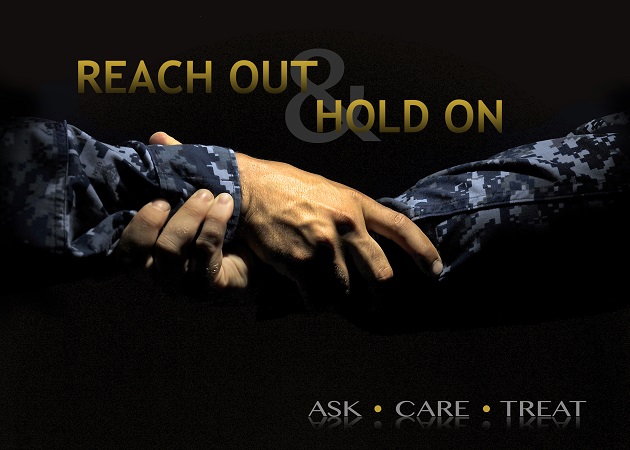U.S. Navy Releases Guidance for Guns, Suicide

The U.S. Navy has released guidance for commanders and health professionals on reducing access to lethal means as related to suicide prevention through voluntary storage of privately-owned firearms.
This guidance is part of a broader Department of Defense strategy to prevent suicide and related tragedies in the military as promulgated in a recent memorandum from the Under Secretary of Defense (Personnel and Readiness).
"Firearms were used in half of all Navy suicide deaths in 2012 and 2013, and continue to be the primary method used in both military and civilian suicides," said Captain Mike D. Smith, director, Navy Suicide Prevention Branch. "Reducing access to lethal means has been proven to save lives. These voluntary measures are intended to help Sailors avoid taking such irreversible actions to end their lives, and provide the opportunity for intervention and care."
NAVADMIN 263/14 states that commanders and health professionals may ask sailors, who are reasonably believed to be at risk for suicide or causing harm to others, to voluntarily allow their privately-owned firearms to be stored for temporary safekeeping by the command. The decision is entirely up to the sailor, and the commander or health care professional shall not offer incentives, disincentives or coerce the sailor into turning over their firearm.
If the sailor agrees to surrender their firearm temporarily, the commander must ensure that the rights of the sailor are protected. The weapon may be safeguarded on the installation or other storage location in coordination with local authorities, and returned upon request unless a predetermined storage period is agreed upon between the commander and the Sailor.
Causes of suicide are complex, but consist of a chain of events leading an individual to feel distress and hopelessness, in combination with the capacity to take lethal action. Research indicates that immediate availability of lethal means directly increases the chance of a lethal attempt during a high-risk period.
"Commanders and health professionals must identify sailors at risk and provide all available assistance while maintaining Sailors' rights," said Smith. "Just as a person should be willing to turn over the car keys when not fit to drive, one should be willing to turn over their firearm for safekeeping until he or she feels fit again."
Warning signs that may indicate suicide risk include expressing thoughts of hurting oneself; developing plans and acquiring means to take lethal action; giving away possessions; engaging in uncharacteristic destructive behavior such as substance abuse or violence; changes in mood including anger or anxiety; loss of connection to others; and/or expressing feelings of hopelessness, purposelessness or feeling like a burden to others.
If a sailor objects to storage of their privately-owned firearm, commanders may ask the sailor to voluntarily dismantle their firearm and allow the command to store critical pieces, ask the sailor to store the firearm with a safety-lock device and provide the key to a trusted adult, or ask the sailor to store the firearm and/or ammunition in the care of a trusted adult. In all situations where there is an immediate risk to life, commanders and health professionals must take immediate action to ensure the sailor receives the necessary care, support and treatment to prevent harm and promote recovery.
For more information, visit Navy Suicide Prevention at www.suicide.navy.mil or the Defense Suicide Prevention Office at www.suicideoutreach.org.
Help is always available. Visit the Military Crisis Line at www.veteranscrisisline.net/activeduty.aspx or call 1-800-273-8255 (Option 1).

